41 reading labels for sodium
› food › nutritionIs Sodium the Same Thing as Salt? - Eatright.org Aug 08, 2019 · The best way to learn how much sodium is in particular foods is by reading the Nutrition Facts label: On the label, look for foods that are lower in sodium. Choose foods with less than 120 milligrams of sodium per serving. Look for the words salt-free, sodium-free, very low sodium and low sodium on the label. What Sodium Labels Mean: A Guide to Decoding Sodium Labels Reduced (or Less) Sodium: This label means that the sodium level in the product has been reduced by 25 percent per serving from the original or a competitor's product. And if that product started with over 500mg sodium per serving, then you're still talking about 375mg of sodium per serving.
Understanding Food Nutrition Labels | American Heart Association 1 - Start with the serving information at the top. This will tell you the size of a single serving and the total number of servings per container (package). 2 - Next, check total calories per serving and container. Pay attention to the calories per serving and how many calories you're really consuming if you eat the whole package.
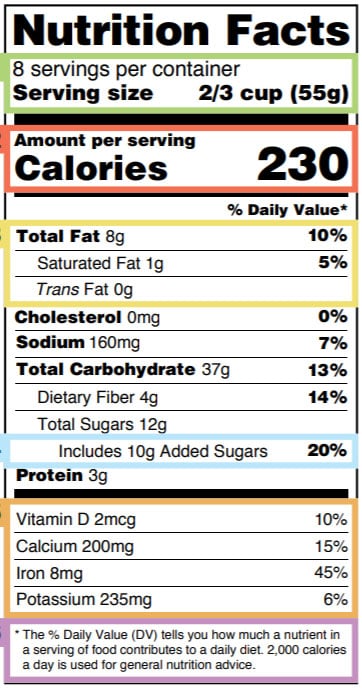
Reading labels for sodium
How to Read Salt Labels | Cooking Light For the consumer, the tricky part is that there are four claims. Two apply when a company is comparing their food to a loosely defined fully salted version. One refers to a specific sodium level, another to whether salt has been added. Bottom line: The amount of sodium per serving (found on the back label) is critical. How To Read Food and Beverage Labels - National Institute on Aging Reading food labels can help you make smart food choices. Learn how to read and understand the product date, ingredient list, and Nutrition Facts label. ... Most older adults exceed the recommended limits for saturated fats, sodium, and added sugars. Compare and choose foods to get less than 100% DV of these each day, making sure to adjust for ... Understanding food labels - Canada.ca Food labels, nutrition facts tables, serving size, ingredients, % daily value, nutrition claims. Services and information. Nutrition facts tables . How to use, what is in them, foods that don't have a nutrition facts table. Serving size. How to use the serving size on nutrition facts tables. List of ingredients. About list of ingredients on packaged foods, common terms used for some ...
Reading labels for sodium. How to Read a Food Label to Limit Sodium: Care Instructions The Nutrition Facts label also gives you the Percent Daily Value for sodium. This is how much of the recommended amount of sodium a serving contains. The daily value for sodium is 2,300 mg. So if the Percent Daily Value says 50%, this means one serving is giving you half of this, or 1,150 mg. Buy low-sodium foods How to Decode Salt on Food Labels: Low Sodium vs Reduced Sodium vs ... Reduced Sodium. These foods have at least 25% less sodium than their original version. "Light in sodium" or "lightly salted" items are reduced by 50%. Unlike low sodium foods, reduced sodium foods can still be swimming in sodium. (One reduced-sodium soup we saw packs 660 mg per serving!) Keep an eye out for reduced sodium soups, reduced ... PDF Controlling Sodium and Reading Labels - Veterans Affairs • Very low sodium: less than 35 milligrams of sodium per serving. • Low sodium: less than 140 milligrams of sodium per serving. 3) Read ingredient lists Labels list the ingredients in order with those that weigh the most appearing first and those that weigh the least appearing last. Choose foods where sodium is listed near the end of the list. How to Understand and Use the Nutrition Facts Label | FDA 25.02.2022 · Saturated fat, sodium, and added sugars are nutrients listed on the label that may be associated with adverse health effects – and Americans generally consume too much of them, according to the ...
Label Reading for Sodium - Kidney Community Kitchen So if a product has 10% sodium - you should count it as 15%. If a product has 8% sodium you should count it as 12%. This is probably the quickest way to convert when reading a label. It will give you a percentage of a 1600mg sodium per day diet - which is a whole lot better than 2400mg. Here's a simple chart: Label Reading the Healthy Way - Alberta Health Services Sodium bicarbonate, Caramel colour blend, BHT (preservative). Label Reading the Healthy Way Page 2 of 4 404222-NFS Nutrition Facts table . The Nutrition Facts table on the food label gives you information on serving size, calories, and at least 12 different nutrients. Use the Nutrition Facts table to compare similar foods. The serving size is listed at the top of the Nutrition Facts … PDF Reading Food Labels to Look for Sodium sodium-free, salt-free or no sodium less than 5 mg of sodium and no sodium chloride in ingredients very low sodium 35 mg or less of sodium no added salt or unsalted no salt added to the product during processing (this is not a sodium-free product) low sodium 140 mg or less of sodium reduced or less sodium at least 25 percent less sodium than the … how to understand food labels - Eat For Health how to understand food labels What to look for… Don’t rely on health claims on labels as your guide. Instead learn a few simple label reading tips to choose healthy foods and drinks, for yourself. You can also use the label to help you lose weight by limiting foods that are high in energy per serve. 100g Column and Serving Size If comparing nutrients in similar food …
How do you read a food label for salt / sodium? - Irish Kidney Diet Sodium x 2.5 = salt content or Salt ÷ 2.5 = sodium content. If you have kidney disease a good goal for sodium intake is 2300 mg of sodium or 6g salt per day. Check with your Doctor or Kidney (Renal) Dietitian to confirm what your maximum daily salt (sodium) limit should be. Nutrition information may be presented in two ways. Using the Nutrition Facts Table: % Daily Value - canada.ca eat less saturated and trans fats, less sodium and more fibre as part of a healthy lifestyle. Use the Nutrition Facts table and Eating Well with Canada’s Food Guide to make healthier food choices. 2 3 Nutrition Facts Per 9 crackers (23 g) Amount % Daily Value Calories 90 Fat 4.5 g 7 % Saturated 2.5 g 13 % + Trans 0 g Cholesterol 0 mg Sodium ... Reading Labels - World Action on Salt & Health Some food labels may only state the sodium content. To convert sodium to salt, you need to multiply the amount by 2.5. For example, 1g of sodium per 100g = 2.5 grams of salt per 100g You then need to know the weight of the serving portion in grams e.g. 30g Then divide the concentration of salt per 100g by 100 and multiply by the serving size. How to Read a Food Label to Limit Sodium: Care Instructions "Sodium-free" or "salt free" means a serving has less than 5 mg of sodium. "Low-sodium" or "low salt" means a serving has 140 mg or less of sodium. "Reduced-sodium," "lower in salt" or "lower in sodium" means that there is 25% less sodium than what the food normally has. This is still usually too much sodium.
PDF Controlling Sodium and Reading Labels When You Shop When selecting processed items, read labels to limit the sodium from food and beverages. A low-sodium nutrition plan usually limits dietary sodium to 1,500-2,000 milligrams (mg) per day. Select more 'Low Sodium' foods with 140 mg of sodium or less per servingand limit 'High Sodium' foods with more than 300 mg of sodium per serving.
Keys To Mastering The Low Sodium Life - Reading Nutrition Labels The American Heart Association has established that 1500 mg. daily intake of sodium is a healthy standard. Most Americans consume over 3400 mg. daily. Food labels cannot claim a product is "healthy" if it has more than 480 mg of sodium per labeled serving (for individual foods) or more than 600 mg of sodium per labeled serving for meals ...
PDF Read the Nutrition Facts Label for Sodium! - NHLBI, NIH Sodium 125mg 5% Total Carbohydrate 9g 3% Dietary Fiber 3g 12% Sugars 4g Protein 2g Vitamin A 35% • Vitamin C 6% Calcium 2% • Iron 2% Read the Nutrition Facts Label for Sodium! Nutrition Facts labels tell you what you need to know about choosing foods that are lower in sodium. Here is a Nutrition Facts label for frozen peas and carrots ...
kidshealth.org › en › teensFood Labels (for Teens) - Nemours KidsHealth Food labels provide more than just nutrition facts. They also tell you what's in a packaged food (i.e., the ingredients). People with food allergies need to check ingredient lists to avoid foods that can cause an allergic reaction. Some food labels also state which country the food came from, whether the food is organic, and certain health claims.
› en › healthy-livingUnderstanding Ingredients on Food Labels | American Heart ... Mar 06, 2017 · But when it comes to sodium, added sugars and saturated and trans fats – which in excess can damage your heart health and increase your risk of heart disease and stroke – it can be difficult to tell just how much is in there. The reason is, these ingredients can go by several names. There are many terms used for sugar on food labels.
Sodium and Food Labels | Sutter Health It's important to note that all nutritional labels list amounts of nutrients per serving. This item, for example, lists 16 servings in the entire container. The sodium level is 120 mg for one serving. That means if you drink the entire container, you'll get 1,920 mg sodium! That could be a critical error if you're not careful.
med.virginia.edu › 199/2014/04 › Low-Sodium-DietLow Sodium Diet - University of Virginia School of Medicine Reading Nutrition Labels You should get in the habit of checking food labels for the most up-to-date information. Sodium is always on the food label. These steps will help you figure out how much sodium is in a certain food: 1. Number of servings and mg of sodium – The label gives you the serving size and the number of servings in the package.
Is Sodium the Same Thing as Salt? - Academy of Nutrition and … 08.08.2019 · The best way to learn how much sodium is in particular foods is by reading the Nutrition Facts label: On the label, look for foods that are lower in sodium. Choose foods with less than 120 milligrams of sodium per serving. Look for the words salt-free, sodium-free, very low sodium and low sodium on the label. Double-check sodium content of foods with labels that …
PDF Reading Food Labels for Sodium (Salt) - Western Health Reading Food Labels for Sodium (Salt) You will find the Nutrition Facts box on most packaged food products. The Percent Daily Value (%DV) tells you whether a food has a little or a lot of a given nutrient. Choose a food with a lower %DV. See if you can find the %DV for sodium on the following label.
Sodium: How to Read Food Labels - Intermountain Healthcare Reading food labels can help you monitor how much sodium you are getting in your diet. Here are some of the key parts to check: Notice the serving size Is that the same portion as you are eating? If your serving size increases, then the amount of sodium you eat also increases. This product has 2 servings Saturated Fat 5g per container
› reading-food-labelsReading Food Labels | ADA Put food labels to work. The Nutrition Facts labels on foods are really the key to making the best choices. We'll cover the basics so that these labels make shopping easier for you. You've heard it all. From carb-free to low-carb, to whole and empty carbs, it's hard to know what it all means. Blood sugar highs and lows aren't always ...
Low Sodium Diet - University of Virginia School of Medicine Reading Nutrition Labels You should get in the habit of checking food labels for the most up-to-date information. Sodium is always on the food label. These steps will help you figure out how much sodium is in a certain food: 1. Number of servings and mg of sodium – The label gives you the serving size and the number of servings in the package ...
Sodium on the Nutrition Facts Label | FDA FDA's Education Materials Sodium in Your Diet Fact Sheet A printable backgrounder that offers the basics on sodium's health effects, easy how-to's for using the Nutrition Facts label to reduce...
How to Read Labels for a Low Sodium Diet - Salt Sanity Sodium Alginate You may find sodium alginate on the ingredient labels in dairy products like yogurt and ice cream where it's used as a stabilizer. It's used to thicken puddings and jams, prevent moisture loss in meats, and to emulsify salad dressings and beverages. Sodium Citrate
Sodium: Look at the Label Sodium: Look at the Label Over 70% of dietary sodium comes from eating packaged and prepared foods Sodium and Health Diets higher in sodium are associated with an increased risk of developing
Your Guide to the New Food Label | National Kidney Foundation Sodium Many people with kidney disease must limit their use of sodium. In general, look for foods with no more than 6 to 10% of the daily value for sodium. Keep an eye out for potassium chloride as it is a common ingredient in low sodium products. If listed, be aware that the food will have a high potassium content.
Food Labels (for Teens) - Nemours KidsHealth Food labels provide more than just nutrition facts. They also tell you what's in a packaged food (i.e., the ingredients). People with food allergies need to check ingredient lists to avoid foods that can cause an allergic reaction. Some food labels also state which country the food came from, whether the food is organic, and certain health claims.

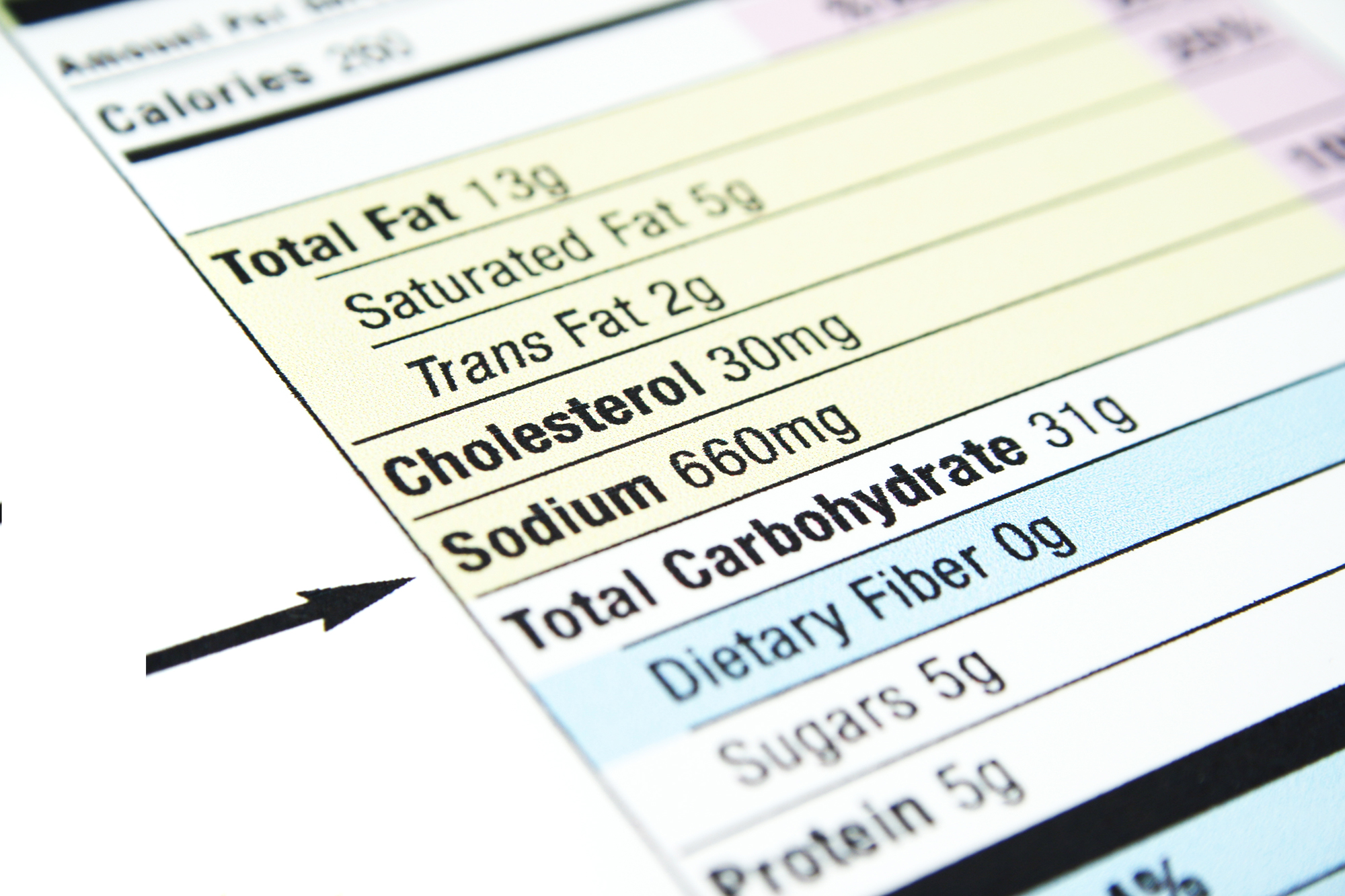




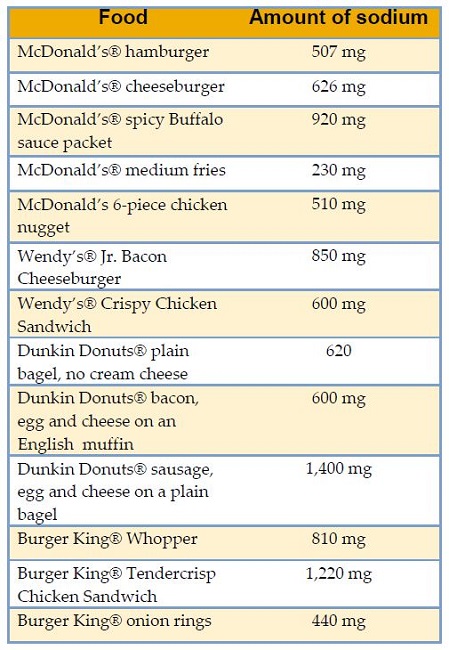

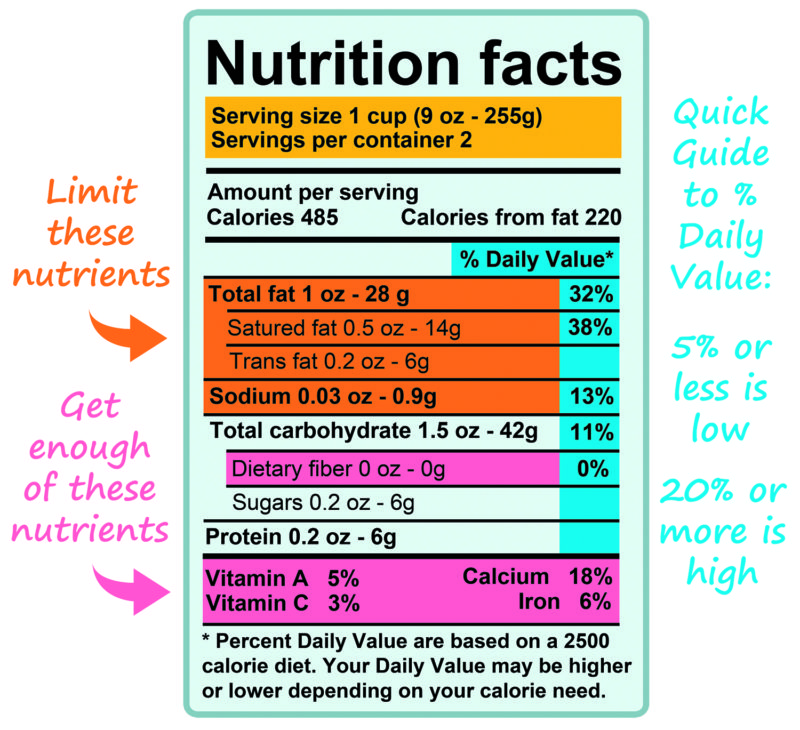

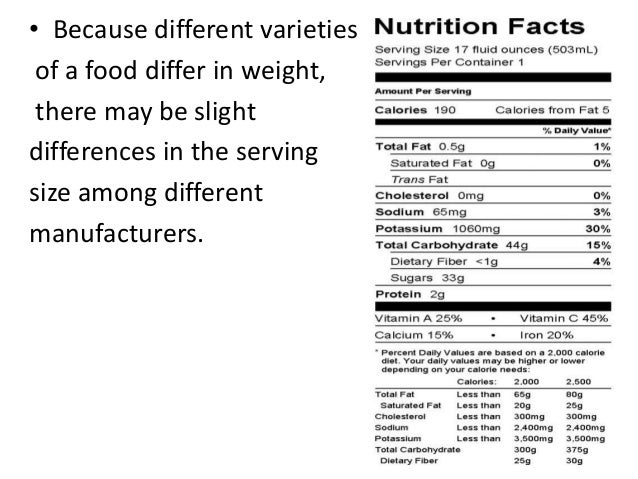
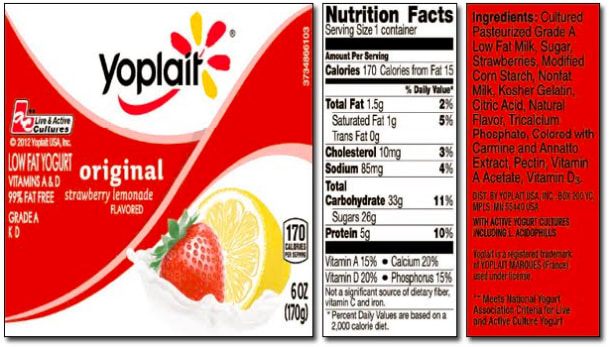


Post a Comment for "41 reading labels for sodium"